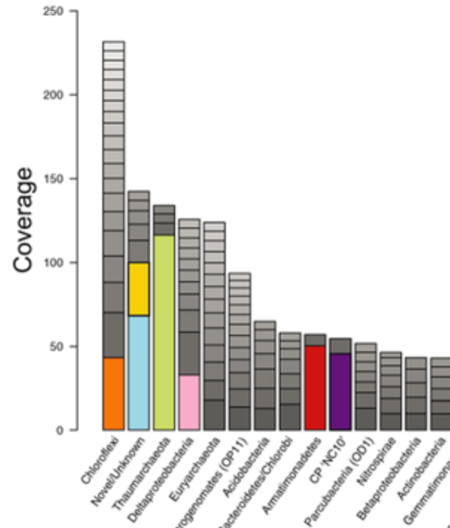Scientific Achievement
New methods were used to reconstruct genomes from sediments and evaluate interlinked roles in biogeochemical cycling. Community proteomics confirmed these activities. The 8 most abundant organisms belong to novel lineages, and two represent phyla with no previously sequenced genomes.
Significance and Impact
Nitrogen, sulfur and carbon fluxes in the terrestrial subsurface are mediated by microbial communities but the details are unclear. We showed that little known and newly described groups of microorganisms play central roles in these cycles.
Research Details
- Sediments were sampled, DNA extracted and sequenced
- New methods to recover genomes from highly complex sediment microbial communities were developed
- Metabolic predictions were made for the eight most abundant organisms. Handoffs were uncovered
- Organisms were classified phylogenetically and shown to derive from little known or unknown phyla
Citation
Hug, L. A.; Thomas, B. C.; Sharon, I.; Brown, C. T.; Sharma, R.; Hettich, R. L.; Wilkins, M. J.; Williams, K. H.; Singh, A.; Banfield, J. F. (2016) Critical biogeochemical functions in the subsurface are associated with bacteria from new phyla and little studied lineages, Environmental Microbiology, 18(1), 159-173 DOI: 10.1111/1462-2920.12930.

